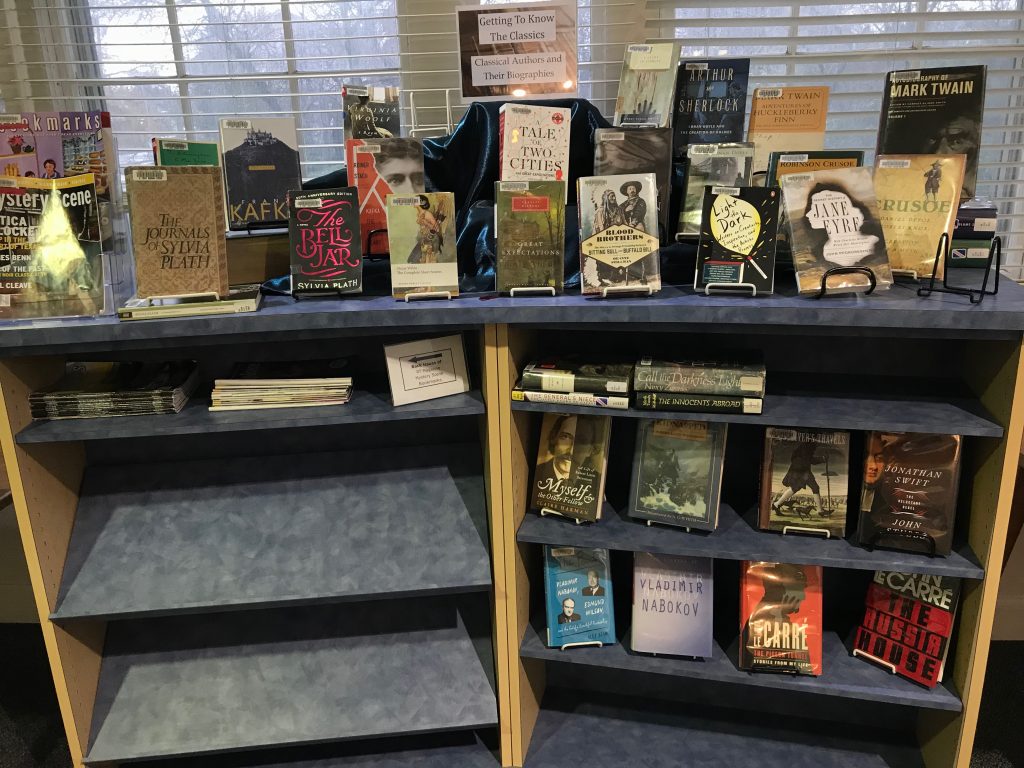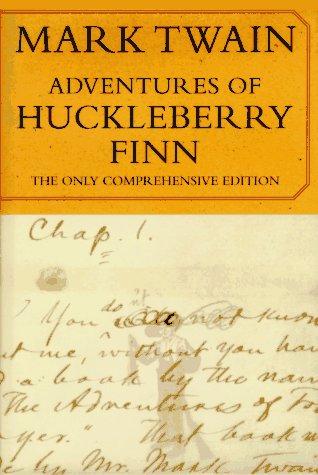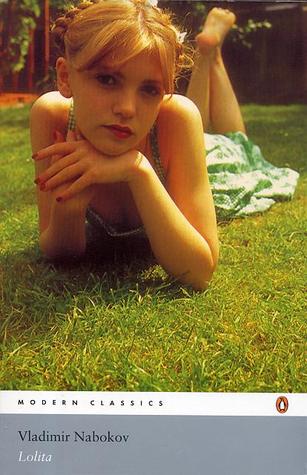
Ever thought that if classics were read along with biographies of the people who wrote them they would be easier to understand? We have. So we’ve put together a reading list and a display pairing famous authors’ books with their biographies
-
A study in scarlet
Summary:In 1887, a young Arthur Conan Doyle published A Study in Scarlet, thus creating an international icon in the quick-witted sleuth Sherlock Holmes. In this, the first Holmes mystery, the detective introduces himself to Dr. John H. Watson with the puzzling line "You have been in Afghanistan, I perceive." And so begins Watson’s, and the world’s, fascination with this enigmatic character. Doyle presents two equally perplexing mysteries for Holmes to solve: one a murder that takes place in the shadowy outskirts of London, in a locked room where the haunting word Rache is written upon the wall, the other a kidnapping set in the American West. Quickly picking up the "scarlet thread of murder running through the colourless skein of life," Holmes does not fail at finding the truth–and making literary history. -
The adventures and memoirs of Sherlock Holmes
Summary: From “A Scandal in Bohemia,” in which Sherlock Holmes is famously outwitted by a woman, the captivating Irene Adler, to “The Five Orange Pips,” in which the master detective is pitted against the Ku Klux Klan, to “The Final Problem,” in which Holmes and his archenemy, Professor Moriarty, face each other in a showdown at the Reichenbach Falls, the stories that appear in The Adventures and Memoirs of Sherlock Holmes bear witness to the flowering of author Arthur Conan Doyle’s genius. “The plain fact,” the celebrated mystery writer Vincent Starrett asserted, “is that Sherlock Holmes is still a more commanding figure in the world than most of the warriors and statesmen in whose present existence we are invited to believe.” -
Arthur and Sherlock : Conan Doyle and the creation of Holmes
Summary:" As a young medical student, Arthur Conan Doyle studied in Edinburgh under the vigilant eye of a diagnostic genius, Dr. Joseph Bell. Doyle often observed Bell identifying a patient’s occupation, hometown, and ailments from the smallest details of dress, gait, and speech. Although Doyle was training to be a surgeon, he was meanwhile cultivating essential knowledge that would feed his literary dreams and help him develop the most iconic detective in fiction. Michael Sims traces the circuitous development of Conan Doyle as the father of the modern mystery, from his early days in Edinburgh surrounded by poverty and violence, through his escape to University (where he gained terrifying firsthand knowledge of poisons), leading to his own medical practice in 1882. Five hardworking years later — after Doyle’s only modest success in both medicine and literature — Sherlock Holmes emerged in A Study in Scarlet. Sims deftly shows Holmes to be a product of Doyle’s varied adventures in his personal and professional life, as well as built out of the traditions of Edgar Allan Poe, Émile Gaboriau, Wilkie Collins, and Charles Dickens — not just a skillful translator of clues, but a veritable superhero of the mind in the tradition of Doyle’s esteemed teacher. Filled with details that will surprise even the most knowledgeable Sherlockian, Arthur and Sherlock is a literary genesis story for detective fans everywhere. "– -
Adventures of Huckleberry Finn
Summary:Mark Twain’s brilliant 19th-century novel has long been recognized as one of the finest examples of American literature. It brings back the irrepressible and free-spirited Huck, first introduced in The Adventures of Tom Sawyer, and puts him center stage. Rich in authentic dialect, folksy humor, and sharp social commentary, Twain’s classic tale follows Huck and the runaway slave Jim on an exciting journey down the Mississippi. -
Autobiography of Mark Twain. Volume 1
Summary:This volume presents Mark Twain’s authentic and unsuppressed voice, brimming with humor, ideas, and opinions, and speaking clearly from the grave as he intended. Eschewing chronology and organization, Twain simply meanders from observation to anecdote and between past and present. There are reminiscences from his youth of landscapes, rural idylls, and Tom Sawyeresque japes; acid-etched profiles of friends and enemies, from his "fiendish" Florentine landlady to the fatuous and "grotesque" Rockefellers; a searing polemic on a 1906 American massacre of Filipino insurgents; a hilarious screed against a hapless editor who dared tweak his prose; and countless tales of the author’s own bamboozlement, unto bankruptcy, by publishers, business partners, doctors, miscellaneous moochers; he was even outsmarted by a wild turkey. Laced with Twain’s unique blend of humor and vitriol, the haphazard narrative is engrossing funny, and revealing of Twain’s mind. -
Autobiography of Mark Twain. Volume 2
Summary:The eagerly-awaited Volume 2 delves deeper into Mark Twain’s life, uncovering the many roles he played in his private and public worlds. Filled with his characteristic blend of humor and ire, the narrative ranges effortlessly across the contemporary scene. He shares his views on writing and speaking, his preoccupation with money, and his contempt for the politics and politicians of his day. Affectionate and scathing by turns, his intractable curiosity and candor are everywhere on view. -
Autobiography of Mark Twain. Volume 3
Summary:"This third and final volume crowns and completes [Twain’s] work. Like its companion volumes, it chronicles Twain’s inner and outer life through a series of daily dictations that go wherever his fancy leads. Created from March 1907 to December 1909, these dictations present Mark Twain at the end of his life: receiving an honorary degree from Oxford University; railing against Theodore Roosevelt; founding numerous clubs; incredulous at an exhibition of the Holy Grail; credulous about the authorship of Shakespeare’s plays; relaxing in Bermuda; observing (and investing in) new technologies"–Dust jacket flap. -
Great expectations
Summary: In what may be Dickens’s best novel, humble, orphaned Pip is apprenticed to the dirty work of the forge but dares to dream of becoming a gentleman — and one day, under sudden and enigmatic circumstances, he finds himself in possession of “great expectations.” In this gripping tale of crime and guilt, revenge and reward, the compelling characters include Magwitch, the fearful and fearsome convict; Estella, whose beauty is excelled only by her haughtiness; and the embittered Miss Havisham, an eccentric jilted bride. -
Charles Dickens at home
Summary:This book tracks the places Dickens lived, from his Portsmouth birthplace and childhood home in Chatham to his last home back in Kent, at Gad’s Hill Place in Rochester. The book also covers his travels in England and abroad, where the locations provided the settings in his novels, such as Nicholas Nickleby’s Yorkshire and in the East Anglia of David Copperfield, Charles Dickens’s most autobiographical novel. Above all, it is London, where he lived in different homes for the majority of his life, which is so identified with Dickens and with his fiction. One thing that characterised his attitude to all his homes in adult life was his deep involvement in domestic arrangements, despite the frantic pace of his intensive work schedule. It was this close attention to detail, as well as his acute observation of his surroundings, that distinguished his novels, both in their portrayal of home life and in their sense of place. An invaluable resource to anyone who has an interest in the settings of Dickens’ work, Hilary Macaskill weaves a narrative which places this great writer in his domestic context, gloriously illustrated with archive material and original photography. –publisher. -
Robinson Crusoe
Summary:During one of his several adventurous voyages in the 1600’s an Englishman becomes the sole survivor of a shipwreck and lives for nearly thirty years on a deserted island. -
Crusoe : Daniel Defoe, Robert Knox, and the creation of a myth
Summary:Where did Crusoe come from? And what is the secret of his endurance? Crusoe explores the intertwined lives of two real men: Daniel Defoe and Robert Knox and the character and book that emerged from their peculiar conjunction. It is the biography of a book and its hero, the story of Defoe, the man who wrote Robinson Crusoe, and of Robert Knox, the man who was Crusoe -
Gulliver’s travels
Summary:Shipwrecked and cast adrift, Lemuel Gulliver wakes to find himself on Lilliput, an island inhabited by little people, whose height makes their quarrels over fashion and fame seem ridiculous. His subsequent encounters – with the crude giants of Brobdingnag, the philosophical Houyhnhnms and the brutish Yahoos – give Gulliver new, bitter insights into human behaviour. Swift’s savage satire view mankind in a distorted hall of mirrors as a diminished, magnified and finally bestial species, presenting us with an uncompromising reflection of ourselves. -
Jonathan Swift : the reluctant rebel
Summary:A detailed portrait of the man behind "Gulliver’s Travels" traces his early loss of a parent, the contradictions that marked his character, and his achievements as a political writer and dean of St. Patrick’s Cathedral in Dublin.,"One of Europe’s most important literary figures, Jonathan Swift was also an inspired humorist, a beloved companion, and a conscientious Anglican minister–as well as a hoaxer and a teller of tales. His anger against abuses of power would produce the most famous satires of the English language: Gulliver’s Travels as well as the Drapier Papers and the unparalleled Modest Proposal, in which he imagined the poor of Ireland farming their infants for the tables of wealthy colonists. John Stubbs’s biography captures the dirt and beauty of a world that Swift both scorned and sought to amend. It follows Swift through his many battles, for and against authority, and in his many contradictions, as a priest who sought to uphold the dogma of his church; as a man who was quite prepared to defy convention, not least in his unshakable attachment to an unmarried woman, his "Stella"; and as a writer whose vision showed that no single creed holds all the answers. Impeccably researched and beautifully told, in Jonathan Swift Stubbs has found the perfect subject for this masterfully told biography of a reluctant rebel–a voice of withering disenchantment unrivaled in English."–Jacket. -
Jane Eyre
Summary: Orphaned into the household of her Aunt Reed at Gateshead and subject to the cruel regime at Lowood charity school, Jane Eyre nonetheless emerges unbroken in spirit and integrity. She takes up the post of governess at Thornfield, falls in love with Mr. Rochester, and discovers the impediment to their lawful marriage in a story that transcends melodrama to portray a woman’s passionate search for a wider and richer life than Victorian society traditionally allowed. With a heroine full of yearning, the dangerous secrets she encounters, and the choices she finally makes, Charlotte Bronte’s innovative and enduring romantic novel continues to engage and provoke readers. -
The secret history of Jane Eyre : how Charlotte Brontë wrote her masterpiece
Summary:The story behind Charlotte Brontë’s beloved classic examines how and why she emphatically concealed her authorship from even her closest friends to hide difficult parallels in her own life, including an invalid father, a dissolute sibling, and her passion for a married man. -
Kafka, the early years
Summary:"How did Kafka become Kafka? This eagerly anticipated third and final volume of Reiner Stach’s definitive biography answers that question with more facts, detail, and insight than ever before, describing the complex personal, political, and cultural circumstances that shaped the young Franz Kafka (1883-1924). It tells the story of the years from his birth in Prague to the beginning of his professional and literary career in 1910, taking the reader up to just before the breakthrough that resulted in his first masterpieces, including "The Metamorphosis." Brimming with vivid and often startling details, Stach’s narrative invites readers deep inside this neglected period of Kafka’s life. The book’s richly atmospheric portrait of his German Jewish merchant family and his education, psychological development, and sexual maturation draw on numerous sources, some still unpublished, including family letters, schoolmates’ memoirs, and early diaries of his close friend Max Brod. The biography also provides a colorful panorama of Kafka’s wider world, especially the convoluted politics and culture of Prague. Before World War I, Kafka lived in a society at the threshold of modernity but torn by conflict, and Stach provides poignant details of how the adolescent Kafka witnessed violent outbreaks of anti-Semitism and nationalism. The reader also learns how he developed a passionate interest in new technologies, particularly movies and airplanes, and why another interest–his predilection for the back-to-nature movement–stemmed from his "nervous" surroundings rather than personal eccentricity. The crowning touch to a masterly biography, this is an unmatched account of how a boy who grew up in an old Central European monarchy became a writer who helped create modern literature."– -
The castle : a new translation, based on the restored text
Summary:A surveyor is lost in a labyrinth in this 1926 German novel, reflecting the author’s concern with man’s inability to assert himself in the face of bureaucracy. It is a new translation that restores the eccentricities in style of the original. -
Kidnapped : being memoirs of the adventures of David Balfour in the year 1751
Summary:A sixteen-year-old orphan is kidnapped by his villainous uncle, but later escapes and becomes involved in the struggle of the Scottish highlanders against English rule. -
Myself and the other fellow : a life of Robert Louis Stevenson
Summary: The short life of Robert Louis Stevenson (1850-94) was as adventurous as almost anything in his fiction: his travels, illness, struggles to become a writer, relationships with his volatile wife and step-family, friendships, and quarrels have fascinated readers for more than a century. He was both engineer and aesthete, dutiful son and reckless lover, Scotsman and South Sea Islander, Covenanter and atheist. Stevenson’s books, including Treasure Island, The Strange Case of Dr. Jekyll and Mr. Hyde, and Kidnapped, have achieved world fame; others — The Master of Ballantrae, A Child’s Garden of Verses, Travels with a Donkey — remain all-time favorites. His unique gift for storytelling and dramatic characterization live in the consciousness even of those who have never read his work: Long John Silver, with his wooden leg and his parrot, is more real to most people than any historical pirate, while “Jekyll and Hyde” has become a universally recognized term for a split personality. No biography has yet done justice to the complex, brilliant, and troubled man who was responsible for so many remarkable creations. His interest in psychology, genetics, technology, and feminism anticipated the concerns of the next century, while his experiments in narrative technique inspired postmodern innovators such as Borges and Nabokov. Stevenson’s recently collected correspondence shows him to have been the least “Victorian” of Victorian writers; he was a man of humour, resilience, and strongly uncoventional views. With access to this and much previously unpublishedmaterial, distinguished biographer Claire Harman has written the most authoritative, comprehensive, and perceptive portrait of Stevenson to date. -
The complete short stories
Summary: Oscar Wilde was already famous as a brilliant wit and raconteur when he first began to publish his short stories in the late 1880s. They have never lacked readers and admirers, George Orwell and W.B. Yeats among them. The stories give free rein to Wilde’s originality, literary skill, and sophistication. They include poignant fairy-tales such as “The Happy Prince” and “The Selfish Giant”, and the extravagant comedy and social observation of “Lord Arthur Saville’s Crime” and “The Canterville Ghost”. They also encompass the daring narrative expriments of “The Portrait of Mr. W. H.”, Wilde’s fictional investigation into the identity of the dedicatee of Shakespeare’s sonnets, and the “Poems in Prose”, based on the Gospel stories.
This edition demonstrates the centrality of Wilde’s shorter fiction in his literary career, and his continuing development of experimentation with the short story format. Combining myth, romance, and irony, Wilde’s short stories enthral and challenge the reader. -
Oscar Wilde : the unrepentant years
Summary: Nicholas Frankel presents a new and revisionary account of Wilde’s final years, spent in poverty and exile on the European continent following his release from an English prison for the crime of “gross indecency” between men. Oscar Wilde: The Unrepentant Years challenges the prevailing, traditional view of Wilde as a broken, tragic figure, a martyr to Victorian sexual morality, and shows instead that he pursued his post-prison life with passion, enjoying new liberties while trying to resurrect his literary career. -
The Russia house : a novel
Summary: John le Carré has earned worldwide acclaim with extraordinary spy novels, including The Russia House, an unequivocal classic. Navigating readers through the shadow worlds of international espionage with critical knowledge culled from his years in British Intelligence, le Carré tracks the dark and devastating trail of a document that could profoundly alter the course of world events. In Moscow, a sheaf of military secrets changes hands. If it arrives at its destination, and if its import is understood, the consequences could be cataclysmic. Along the way it has an explosive impact on the lives of three people: a Soviet physicist burdened with secrets; a beautiful young Russian woman to whom the papers are entrusted; and Barley Blair, a bewildered English publisher pressed into service by British Intelligence to ferret out the document’s source. A magnificent story of love, betrayal, and courage, The Russia House catches history in the act. For as the Iron Curtain begins to rust and crumble, Blair is left to sound a battle cry that may fall on deaf ears. -
The pigeon tunnel : stories from my life
Summary:The author shares personal anecdotes from his life, discussing subjects ranging from his Cold War-era service in British intelligence to his work as a writer in Russia before and after the collapse of the Berlin Wall. -
The bell jar
Summary:This extraordinary work–echoing Plath’s own experiences as a rising writer/editor in the early 1950s–chronicles the nervous breakdown of Esther Greenwood: brilliant, beautiful, enormously talented, successful, but slowly going under, and maybe for the last time. -
Sylvia Plath
Summary: Presents a collection of criticism and analysis of the works of the twentieth-century American poet. -
Lolita
Summary:When it was published in 1955, Lolita immediately became a cause celebre because of the freedom and sophistication with which it handled the unusual erotic predilections of its protagonist. But Vladimir Nabokov’s wise, ironic, elegant masterpiece owes its stature as one of the twentieth century’s novels of record not to the controversy its material aroused but to its author’s use of that material to tell a love story almost shocking in its beauty and tenderness. Awe and exhilaration–along with heartbreak and mordant wit–abound in this account of the aging Humbert Humbert’s obsessive, devouring, and doomed passion for the nymphet Dolores Haze. Lolita is also the story of a hypercivilized European colliding with the cheerful barbarism of postwar America, but most of all, it is a meditation on love–love as outrage and hallucination, madness and transformation. -
The feud : Vladimir Nabokov, Edmund Wilson, and the end of a beautiful friendship
Summary:"In 1940 Edmund Wilson was the undisputed big dog of American letters. Vladimir Nabokov was a near-penniless Russian exile seeking asylum in the States. Wilson became a mentor to Nabokov, introducing him to every editor of note, assigning reviews for The New Republic, engineering a Guggenheim. Their intimate friendship blossomed over a shared interest in all things Russian, ruffled a bit by political disagreements. But then came Lolita, and suddenly Nabokov was the big (and very rich) dog. Finally the feud erupted in full when Nabokov published his hugely footnoted and virtually unreadable literal translation of Pushkin’s famously untranslatable verse novel Eugene Onegin. Wilson attacked his friend’s translation with hammer and tong in the New York Review of Books. Nabokov counterattacked in the same publication. Back and forth the increasingly aggressive letters volleyed until their friendship was reduced to ashes by the narcissism of small differences"– -
Light the dark : writers on creativity, inspiration, and the artistic process
Summary:"What inspires you? That’s the simple, but profound question more than forty renowned authors answer in LIGHT THE DARK. Each author picks a favorite passage–from a novel, a song, a poem–to reveal what gets them started and keeps them going doing the creative work they love. From there, incredible stories of life changing encounters with art emerge, like how sneaking a volume of Stephen King stories into his job as a night security guard helped Khaled Hosseini learn that nothing he creates will ever be truly finished. Or how discovering Toni Morrison’s Beloved in college taught Junot Diaz how art can create communities of shared experience. Here is a stunning guide to creative living and writing in the vein of Bird by Bird, Big Magic, and Daily Rituals for anyone who wants to learn how great writers find inspiration and how to find some of your own. Writer Joe Fassler has been collecting these lessons in his beloved "By Heart" series for The Atlantic, spinning conversations with hundreds of authors into motivating essays paired with striking illustrations. Light the Dark collects the best of "By Heart" and adds brand new pieces from award-winning writers like Marilynne Robinson, Junot Diaz, and Neil Gaiman"– -
To the river
Summary: To the River is the story of the Ouse, the Sussex river in which Virginia Woolf drowned in 1941. One midsummer week over sixty years later, Olivia Laing walked Woolf’s river from source to sea. The result is a passionate investigation into how history resides in a landscape – and how ghosts never quite leave the places they love. Along the way, Laing explores the roles rivers play in human lives, tracing their intricate flow through literature and mythology alike. To the River excavates all sorts of stories from the Ouse’s marshy banks, from the brutal Barons’ War of the thirteenth century to the ‘Dinosaur Hunters’, the nineteenth-century amateur naturalists who first cracked the fossil code. Central among these ghosts is, of course, Virginia Woolf herself: her life, her writing and her watery death. Woolf is the most constant companion on Laing’s journey, and To the River can be read in part as a biography of this extraordinary English writer, refracted back through the river she loved. But other writers float through these pages too – among them Iris Murdoch, Shakespeare, Homer and Kenneth Grahame, author of the riverside classic The Wind in the Willows. The result is a wonderfully discursive read – which interweaves biography, history, nature writing and memoir, driven by Laing’s deep understanding of science and cultural history. It’s a beautiful, lyrical work that marks the arrival of a major new writer.
These books and more are available on the Read This Display at the library.



